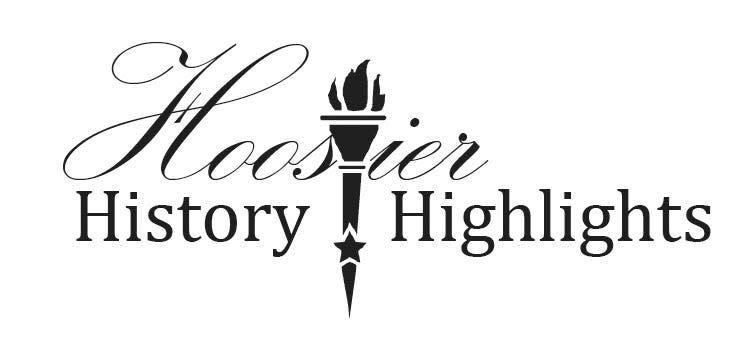Hoosier History Highlights: March 27-April 2

- Oops!Something went wrong.Please try again later.
- Oops!Something went wrong.Please try again later.
- Oops!Something went wrong.Please try again later.
- Oops!Something went wrong.Please try again later.
This Week in Indiana History
1892 - Hoosier poet James Whitcomb Riley performed for a distinguished audience at the White House. Included were President and Mrs. Benjamin Harrison, members of the Cabinet, Vice President Levi Morton, and a number of United States Senators. Newspapers reported that “Mr. Riley appeared at excellent advantage in his reading, and completely captivated the large and intelligent audience. He was favored with a number of encores.” (Pictured: A mural of Riley by artist Blice Edwards on a building near the poet’s Lockerbie Street neighborhood.)
100 Years Ago
1922 - The Hatfield radio studio on North Meridian Street in Indianapolis announced the premiere of station WOH. A special live broadcast included Governor Warren McCray, Indianapolis Mayor Samuel Shank, author Meredith Nicholson, and newspaper reporter Mary E. Bostwick. Music was provided by the Purdue Glee Club and Holler’s Hoosier Orchestra. The radio signal reached wide parts of the United States.
1954 - Mary Jane Croft made her first appearance on the I Love Lucy television series. She later became a regular on the show, portraying Betty Ramsey, Lucy‘s neighbor in Connecticut. Croft was born in Muncie and attended Ball State University. She developed her interest in acting at the Muncie Civic Theater.
1965 - The First National Bank in Richmond introduced the public to the first electronic data processing center in Eastern Indiana. Special demonstrations were presented of the Burroughs B270 computer system. On display were the central processor, a sorter-reader what could process up to 1200 items a minute, the magnetic tape units where information was stored, and a printer which could produce 40 statements a minute.
1969 - Thousands lined railroad tracks through Southern Indiana to pay their respects as the funeral train for former President General Dwight D. Eisenhower passed by. Flags lined the route in Vincennes where honor guards were posted by the American Legion and Veterans of Foreign Wars. The train was on the way to Abilene, Kansas, where Eisenhower was to be buried in ceremonies later in the day.
1998 - The Indiana High School Athletic Association honored four state champions in boys' basketball. The new multi-class system replaced the single class system which had been in effect since 1912. The four winners were Pike High School of Indianapolis, Indianapolis Cathedral, Alexandria, and Lafayette Central Catholic.
* * * *
HOOSIER QUOTE OF THE WEEK
"The beauty of being able to draw, or paint, from an early age is that you never feel trapped, least of all by your immediate circumstances."
---Bill Blass (1922 - 2002)
Born in Fort Wayne, Indiana, Bill Blass was one of the most famous fashion designers of his day.
* * * *
Indiana quick quiz
Albert Von Tilzer was born in Indianapolis on March 29, 1878. A composer, his most famous song is:
a. "I Love You Truly"
b. "Back Home Again in Indiana"
c. "Take Me Out to the Ballgame"
d. "Happy Birthday to You"
Answer
c. "Take Me Out to the Ballgame"
* * * *
Extra
A century ago, the official opening of a powerful broadcasting station in Indianapolis generated a great deal of excitement. To the average person, radio was mysterious and magical. Consider the following taken from the newspaper ad for the premiere broadcast: The completion of this radio station will not only provide the public with a splendid means of entertainment and educational features, but will give to Indianapolis the greatest publicity. From Atlantic City on the east to Colorado on the west and from central Canada to the Gulf of Mexico, Indianapolis’ call will daily go forth. These speakers on Wednesday evening will address a vast and unseen audience. Their voices will penetrate to the church and to the sick room. They will reach thousands of youths in hundreds of educational institutions. They will find with ease their way to the farmer and to the wage earner, just as they will to the homes of secluded millionaires. The very spirit of Indianapolis will go forth to a vast part of the United States in a manner not to be denied.
This article originally appeared on Evening World: Hoosier History Highlights: March 27-April 2

